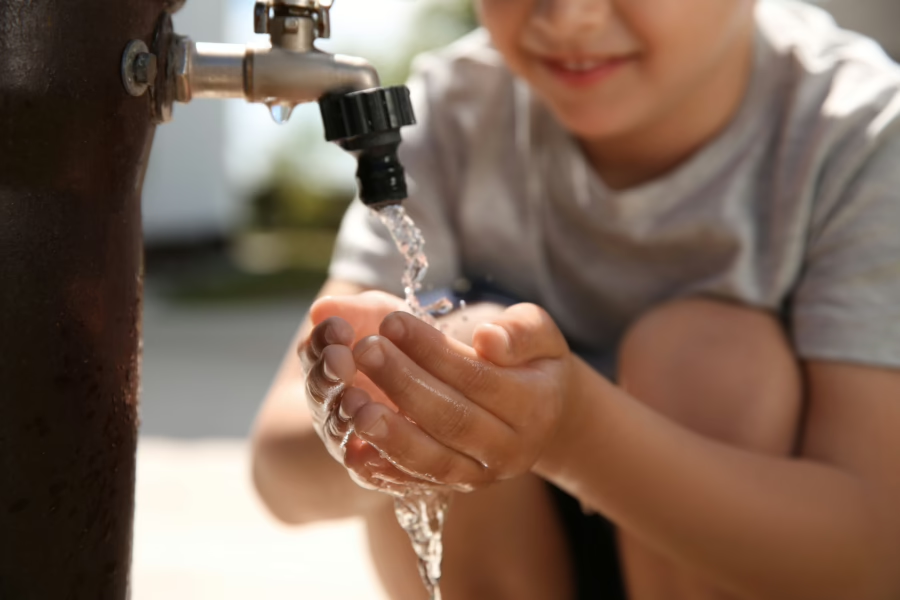The water sector is on the front lines of climate change, with climate-related water stress such as floods, droughts, and severe storms impacting communities around the country. Water infrastructure and services can also play a significant role in mitigation; recent studies estimate that freshwater sources and water and wastewater services
account for at least 10 percent of global greenhouse gas emissions.
As a sector, we must pursue projects to create or improve climate-ready infrastructure to protect communities and the planet from worsening climate impacts. Fortunately, new federal funding is available for tax-exempt agencies and utilities for projects that reduce emissions and boost environmental and economic resilience in the face of a changing climate.
In May, the US Water Alliance’s One Water Council was joined by experts to learn about funding opportunities embedded in the recent Inflation Reduction Act and how best to access them to advance sustainable One Water management.
Key funding sources discussed by the One Water Council, which are summarized below, include the Investment Tax Credit, the Greenhouse Gas Reduction Fund, and the Climate Pollution Reduction Grants Program.
Investment Tax Credit
Following the passage of the Inflation Reduction Act (IRA) last year, tax-exempt agencies became eligible to receive direct payment through the Investment Tax Credit (ITC) for qualifying project costs without having to work with a private partner. This opportunity is extended to facilities projects that
begin construction before January 1, 2025, and now includes biogas and clean energy projects like those many wastewater utilities are undertaking. The beginning of construction is established when physical work of a significant nature is met (the Physical Work Test) or when five percent or more of the total cost has been paid or incurred (five percent safe harbor).
The credit values qualifying agencies can receive from the IRS through direct payment range from 6 – 50 percent of eligible project costs based on:
The City of Columbus, Ohio, a US Water Alliance member, moved heaven and Earth to take advantage of this funding in the IRA. The City combined and prioritized three projects that were already on their future project radar to get up to a 50 percent rebate (direct payment) on construction costs by meeting all the eligibility criteria and bonuses listed above. Columbus anticipates that they will receive $75 – $80 million back from IRA incentives on this $200 million project. These savings provided the boost Columbus needed to kickstart the co-generation, digester expansion, and FOG/HSW receiving station projects in their pipeline. With the IRA, Columbus is maximizing their savings and moving forward with confidence while reducing methane emissions and producing renewable heat and power through bioenergy.
Greenhouse Gas Reduction Fund
This new program administered by the US Environmental Protection Agency (EPA) offers $27 billion to fund projects that reduce greenhouse gas emissions and air pollution and support clean energy development. It includes $14 billion for a National Clean Investment Fund, six billion for a Clean Communities Investment Accelerator, and seven billion for the Clean Solar for All program—the latter two prioritizing investment in historically underserved and low-income communities across the country.
The EPA is currently developing a framework and will share application details in the summer of 2023, with funds delivered to nonprofit partners/brokers by September 2024. If you are interested in applying for this funding, you can prepare now by registering for SAM.gov and Grants.gov accounts. This process can take one to four months, so beginning now may give you a head start once application details are released.
Climate Pollution Reduction Grants Program
This program administered by the EPA provides $250 million to more than 60 of the largest metropolitan areas and municipalities in the country that have committed to participate in the climate action planning process. The US Water Alliance is helping these municipalities put climate action and climate mitigation strategies into their plans so they are prepared to make the most out of the next round of funding, totaling $4.6 billion, in 2025 – 2026. More information on the program can be found
here.
And more!
The Inflation Reduction Act offers the following additional funding opportunities for the water sector to reduce its greenhouse gas emissions and adapt to a changing climate.
| Program |
Funding |
Purpose |
| Coastal Resilience Fund |
$2.6 billion (NOAA, through the end of FY26) |
Coastal extreme storm and climate preparedness through natural infrastructure projects |
| Conservation Stewardship Program |
$3.25 billion (USDA, through the end of FY26) |
Technical and financial assistance to farmers for practices that reduce water use and pollution |
| Domestic Water Supply Program |
$550 million (Bureau of Reclamation, through the end of FY31) |
Planning, design, and construction of projects to provide water supplies to disadvantaged communities without reliable water access |
| Drought Mitigation |
$4 billion (Bureau of Reclamation, through the end of FY26) |
Drought mitigation efforts in the West for communities and Tribes |
| Climate and Environmental Justice Block Grants |
$3 billion (EPA, through the end of FY26) |
Supports community efforts to confront and overcome persistent pollution challenges in underserved communities |
Water infrastructure and services will face increasing climate impacts in the coming decades. How severe those impacts are on water systems, operations, and sector finances will depend on the sector’s ability to reach net zero emissions. This historic water infrastructure funding presents a once-in-a-lifetime opportunity to reduce the gravity of consequences for communities facing disparate environmental and climate challenges and ultimately ensure a high quality of life for all.
If you are interested in getting involved, please look out for more information about the next steps and insights from our Greenhouse Gas Reductions Cohort or check out resources from the Water Utility Climate Alliance to foster community resilience in the face of a changing climate.


